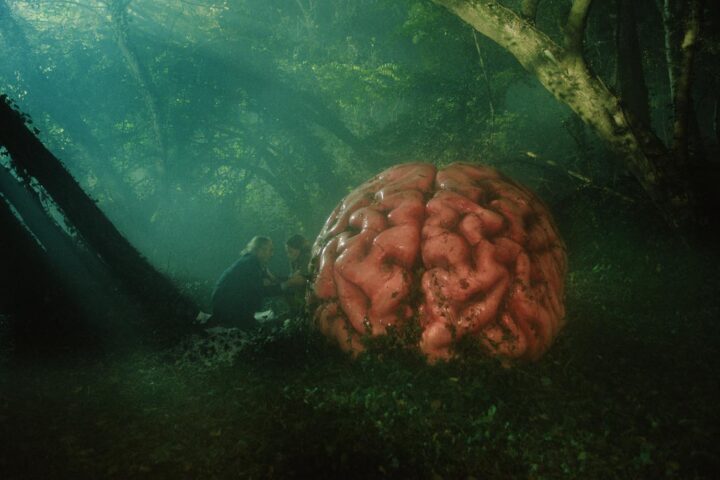When George Orwell went to war, he expected a nasty business of skirmishes—the clanging of iron and steel and the shouts of victory or death. But as his 1938 memoir Homage to Catalonia documents well, the days and weeks of boredom in between battles, when weather, hunger, and infection preoccupied his mind, are their own kind of torture. Even when Orwell is shot in the throat, he downplays the pain of the moment, pondering it as a surreal break from the doldrums of marching and scouting.
Orwell’s experience during the Spanish Civil War wasn’t akin to what took place in the trenches of World War I, nor on the frontline of Normandy, and as such Homage to Catalonia is no Storm of Steel. At least in that more harrowing war story, one can see the romantic side of mass death just as many saw beauty and meaning in the suicide of English poet Thomas Chatterton. For Orwell, war was a matter of staring at the clock and, say, thinking of your gangrenous toes.
In this Orwellian spirit, Roberto Minervini conjures a Civil War on the fringes of the theater in The Damned. The Italian filmmaker’s most recent film about the American psyche follows a cadre of Union army volunteers as they wander the desolate, supposedly gold-ridden Montana Territory. The company does laundry, pitches tents, plays cards, patrols the woods, and at one point finds time for a game of baseball. Then, with no forewarning, the enemy fires at them from beyond the horizon, and several men are killed. From there, those who remain wander the snowy trail up a nearby ridge and camp again. They discuss God and war by lantern light.
Recalling Minervini’s past docufiction work (Low Tide, Stop the Pounding Heart, The Other Side), The Damned is a show of impressionistic portraiture. Here, the regimented tasks of nomadic living are given the treatment that Gustave Caillebotte gave The Floor Scrapers. Shadows play on faces at night, and not a single scene is shot in the flatness of noon light.
But while Minervini’s camera—its vintage lenses dropping off focus everywhere outside the immediate center of the frame—floridly beautifies the soldiers’ quotidian tasks, these men don’t see their lives as beautiful. “Does God approve of war?” asks a soldier at one point. Such fragments of dialogue heard throughout The Damned give the impression that every soldier in the film has been cut from the brooding cloth of Dostoevsky’s Raskolnikov.
These doughboy philosophers are granted even more wistfulness by Minervini’s signature shot, a tracking medium-shot following a walking character, which is repeated to such an extent that, without a few key establishing shots of the group, might lead you to assume that each soldier is likely lost in the wilds of Montana by his lonesome. It’s all in an effort to work against the bravado associated with the war films of yesteryear, and it all certainly mirrors Orwell’s Homage to Catalonia, but these men behave more like those penitent souls in the afterlife, so resolutely focused on the failures of their lives, that Dante described as “shades” in his Purgatorio than the gallant American militiamen famous for their revelry and grim optimism.
Minervini fights against classic Hollywood’s Technicolor visions of men at war, like those of John Ford, with a kind of dirty realism. The on-location shooting in Montana, the cast composed of mostly non-actors, the seemingly improvised dialogue that’s informed by the actors’ real lives—these factors come together to paint a bleak, believable portrait of the souls during the Civil War who found themselves slogging along to the mindless rhythm of war.
But this realism misses a truth that Ford so often touched on in his work—that bonding, that spectacle of drunken male camaraderie, in times of conflict is a holy act, a counterpoise to unbelievable horrors. Minervini’s camera ably conjures the melancholy and alienation that afflict his characters across scenes that merge documentary and neorealist techniques, but it’s far from realistic to expect a troop of soldiers to act aloof around each other when they’re all in the shit. The existentialists were created after and as a result of the war, not during.
Perhaps Minervini’s somnambulant soldiers are best seen as the least realist element of The Damned. After all, every close-up of a soldier in this film frames their face in a halo of soft focus, the world behind them a mere blur. Are they saints, shades, or, as the title suggests, damned? Why else do they concern themselves with the questions of the modernists if they’re not themselves ghosts, forced to wander wars of the past to find meaning? It’s frustrating that every other element of the film works against a more abstract reading, emphasizing instead the dullness of war, the meaninglessness of war, all the truisms that all except the most bellicose commentators have long accepted about war. At least when Orwell told this story he was funny.
Since 2001, we've brought you uncompromising, candid takes on the world of film, music, television, video games, theater, and more. Independently owned and operated publications like Slant have been hit hard in recent years, but we’re committed to keeping our content free and accessible—meaning no paywalls or fees.
If you like what we do, please consider subscribing to our Patreon or making a donation.



